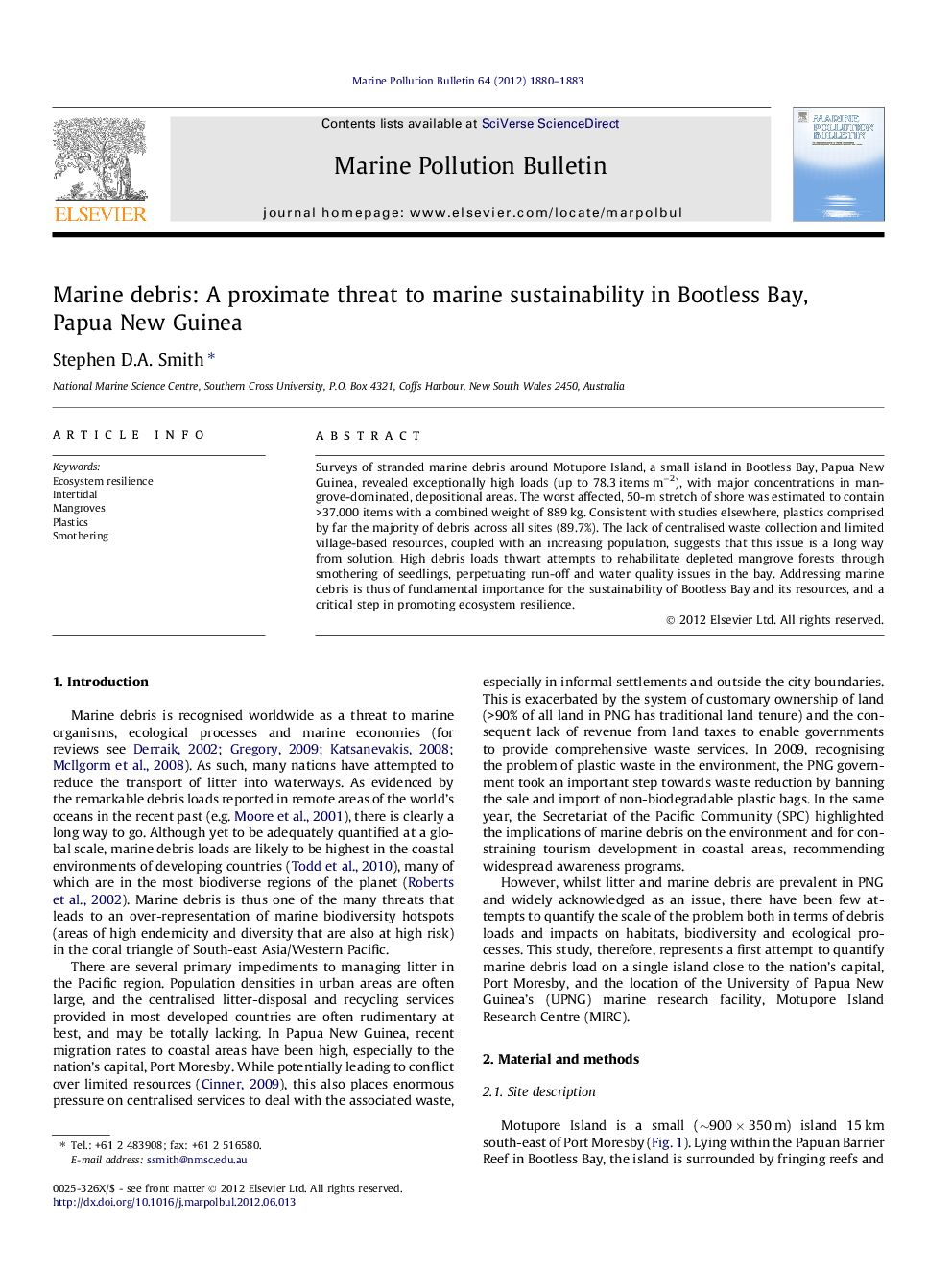| کد مقاله | کد نشریه | سال انتشار | مقاله انگلیسی | نسخه تمام متن |
|---|---|---|---|---|
| 6360088 | 1315649 | 2012 | 4 صفحه PDF | دانلود رایگان |

Surveys of stranded marine debris around Motupore Island, a small island in Bootless Bay, Papua New Guinea, revealed exceptionally high loads (up to 78.3 items mâ2), with major concentrations in mangrove-dominated, depositional areas. The worst affected, 50-m stretch of shore was estimated to contain >37.000 items with a combined weight of 889 kg. Consistent with studies elsewhere, plastics comprised by far the majority of debris across all sites (89.7%). The lack of centralised waste collection and limited village-based resources, coupled with an increasing population, suggests that this issue is a long way from solution. High debris loads thwart attempts to rehabilitate depleted mangrove forests through smothering of seedlings, perpetuating run-off and water quality issues in the bay. Addressing marine debris is thus of fundamental importance for the sustainability of Bootless Bay and its resources, and a critical step in promoting ecosystem resilience.
⺠Intertidal marine debris was evaluated at Motupore Island, Bootless Bay, Papua New Guinea. ⺠Debris loads were some of the highest documented globally to date (up to 78.3 items mâ2). ⺠Almost 90% of items were plastic. ⺠Marine debris severely hampers local efforts to rehabilitate mangrove habitats. ⺠Managing marine debris is critical for the long-term sustainability of Bootless Bay.
Journal: Marine Pollution Bulletin - Volume 64, Issue 9, September 2012, Pages 1880-1883